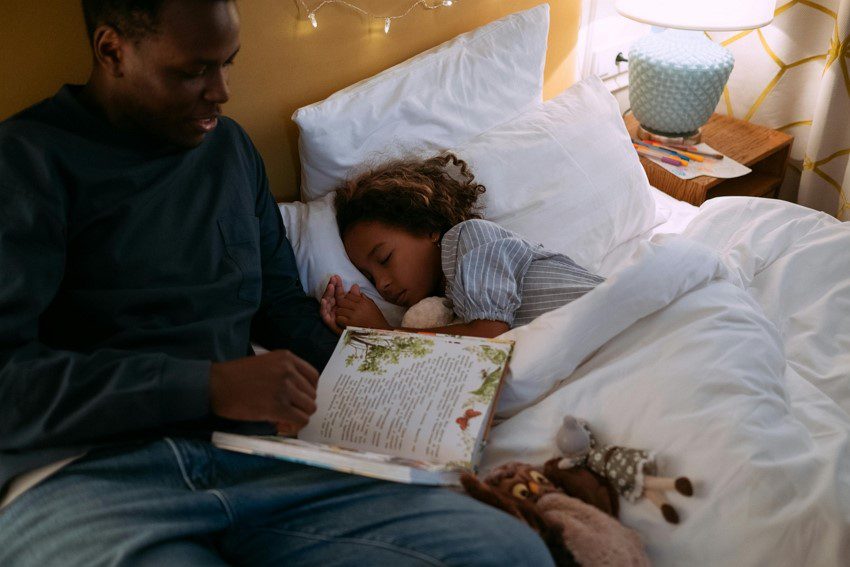Helping children get enough sleep is one of the most important things parents can do. A good night’s sleep supports growth, learning, and overall mood. In this article, we will discuss the amount of sleep children of different ages require, how to establish a consistent bedtime routine, and how to create an optimal sleep environment. We will also cover how to manage screen time before bed, common sleep challenges, and ways to help kids fall asleep faster. Plus, you will find helpful tips for daytime habits that make nighttime rest easier. Along the way, we will mention a great tool called a travel sound machine that many parents find useful. This guide will help you understand kid sleeping and support your child’s healthy sleep habits.
Table of Contents
How Much Sleep Do Kids Need by Age?
Children need different amounts of sleep at each stage of their growth. Here is a simple guide to how many hours your child needs each night:
- Newborns (0 to 3 months): 14 to 17 hours
- Infants (4 to 11 months): 12 to 15 hours
- Toddlers (1 to 2 years): 11 to 14 hours
- Preschoolers (3 to 5 years): 10 to 13 hours
- School-age children (6 to 13 years): 9 to 11 hours
- Teenagers (14 to 17 years): 8 to 10 hours
Keep in mind that every child is unique, and some children may need a little more or less sleep. The important thing is to watch for signs of tiredness or difficulty waking up to know if your child is getting enough rest.
Creating a Consistent Bedtime Routine
A bedtime routine helps signal to your child that it is time to sleep. Having a consistent routine every night makes it easier for kids to relax and get ready for bed. Here are some steps to try:
- Choose a set bedtime and stick to it every night, even on weekends.
- Start winding down 30 to 60 minutes before bed by turning off bright lights and loud noises.
- Include calming activities like reading a story, gentle stretches, or a warm bath.
- Avoid stimulating games or exciting TV shows close to bedtime.
Children feel more secure and calm when they know what to expect. The routine can also become a special parent-child time that your kid looks forward to every night.
Ideal Sleep Environment: Darkness, Temperature, and Noise
The sleep environment plays a big role in how well kids sleep. Here are some tips to create the ideal setting:
- Keep the bedroom dark. Use blackout curtains or blinds to block outside light.
- Maintain a comfortable room temperature, usually between 65 and 70 degrees Fahrenheit.
- Use soft, comfortable bedding.
- Control noise with quiet or soothing sounds. Some parents find that a travel sound machine is a perfect solution for this. A sound machine can play a gentle noise that blocks distracting sounds and helps kids fall asleep faster. You can explore choices on MomCozy for easy travel options.
- Make sure the bedroom is safe and free from distractions like toys or electronic devices.
Managing Screen Time Before Bed
Devices such as tablets, phones, and TVs emit blue light that can interfere with the body’s ability to fall asleep. It is best to limit screen time at least one hour before bedtime. Instead of screens, encourage quiet activities like puzzles, coloring, or reading books. If your child uses a screen for stories or music, set the screen brightness to low and use apps with night mode if possible.
Establishing screen limits supports your child’s natural sleep cycle and helps them fall asleep more easily.
Common Sleep Challenges: Bedtime Resistance, Night Waking, and More
Many parents face challenges with their kids at bedtime. Here are some common issues and ideas to handle them:
- Bedtime resistance: Kids may want to stay up longer. Stick to the routine and calmly remind them it is time for sleep. Offering a small comfort object like a favorite blanket can help.
- Night waking: It is normal for kids to wake briefly during the night. Avoid turning on bright lights and try to keep interactions calm and brief.
- Nightmares or fears: Talk to your child during the day about any fears and reassure them before bed. A nightlight or favorite toy can offer comfort.
Tips for Helping Kids Fall Asleep Faster
Here are some easy but effective ways to help kids fall asleep quickly:
- Make sure they get lots of physical activity during the day, but not too close to bedtime.
- Offer a light snack before bed if hungry, such as a small piece of fruit or milk.
- Use relaxation exercises like deep breathing or gentle massage.
- Make sure the child’s bedroom is comfortable and quiet.
- Try using a travel sound machine to create soothing background noise.
Daytime Habits That Support Better Nighttime Rest

Good sleep starts during the day. Encourage your child to:
- Get outdoor play and sunlight every day. Natural light helps regulate sleep cycles.
- Keep naps age-appropriate and not too late in the day.
- Eat balanced meals and hydrate throughout the day.
- Avoid caffeine or sugary drinks, especially in the afternoon.
When to Talk to a Pediatrician About Sleep Issues
Most sleep challenges can be handled at home, but sometimes professional advice is needed. Contact a pediatrician if:
- Your child has been having trouble falling or staying asleep for weeks.
- Sleep problems affect your child’s mood, behavior, or school performance.
- Breathing issues like snoring or pauses in breathing occur during sleep.
- You notice restless legs or unusual movements that disturb sleep.
Conclusion
Helping your child develop healthy kid sleeping habits is one of the best gifts you can give. Understanding how much sleep they need, setting a consistent bedtime routine, and creating the right environment will make a big difference. Managing screen time and being ready for common challenges with patience helps, too. Adding helpful tools like a travel sound machine can ease the bedtime process and keep sleep steady, even on the go. Together, these steps support your child’s growth, mood, and learning.













